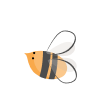- 1 week ago
Flat Head Syndrome (Plagiocephaly) in Babies: When Is Intervention Needed?
What Is Plagiocephaly?
Plagiocephaly refers to an asymmetric flattening of one side of a baby’s head. It often involves:
- Flattening on the right or left side of the back of the head
- One ear appearing to shift forward compared to the other
- Head shape appearing uneven or slanted when viewed from above
The most common type is positional (or deformational) plagiocephaly, caused by consistently lying in the same position.
What Causes Plagiocephaly?
- Lying flat on the same side for extended periods
- Intrauterine positioning (e.g., twins, limited space in womb)
- Torticollis (tight neck muscles causing head tilt)
- Premature birth (softer skull bones, longer hospital stays)
- Lack of tummy time or insufficient holding
When Is It Considered Normal or Mild?
|
Feature |
Interpretation |
|
Mild flattening at the back |
Often resolves with repositioning |
|
Normal head growth |
No developmental concerns |
|
Facial and ear alignment preserved |
Cosmetic only |
|
Normal neck movement |
Torticollis unlikely |
Most cases of positional plagiocephaly improve by 6–12 months, especially with early action.
When to Seek Medical Attention
Consult a pediatrician or pediatric physical therapist if:
- Flattening is noticeable beyond 3 months
- One ear appears misaligned or facial asymmetry develops
- Head shape worsens after 6 months
- Baby prefers turning head to one side (possible torticollis)
- You notice developmental delays or family history of skeletal concerns
Early assessment helps prevent long-term cosmetic concerns and avoids unnecessary treatment later.
Treatment Options for Plagiocephaly
1. Repositioning (Ideal for 0–6 months)
- Practice daily tummy time while baby is awake
- Alternate head position during sleep
- Place toys, light, or interaction on non-preferred side
- Breastfeed on both sides evenly
2. Physical Therapy
- Recommended if torticollis is present
- Includes stretching exercises to improve neck mobility and symmetry
3. Helmet Therapy (Cranial Orthosis)
- For moderate to severe cases not improving with repositioning
- Usually started between 5–12 months of age
- Helps guide head growth into a more symmetrical shape
Helmet therapy is painless and non-invasive. It doesn’t affect brain development.
Can Plagiocephaly Be Prevented?
Yes—most cases are preventable with early positional care:
- Start tummy time from the newborn period
- Avoid prolonged time in car seats, swings, or bouncers
- Alternate baby’s head direction during sleep
- Watch for neck stiffness or head preference and address early













